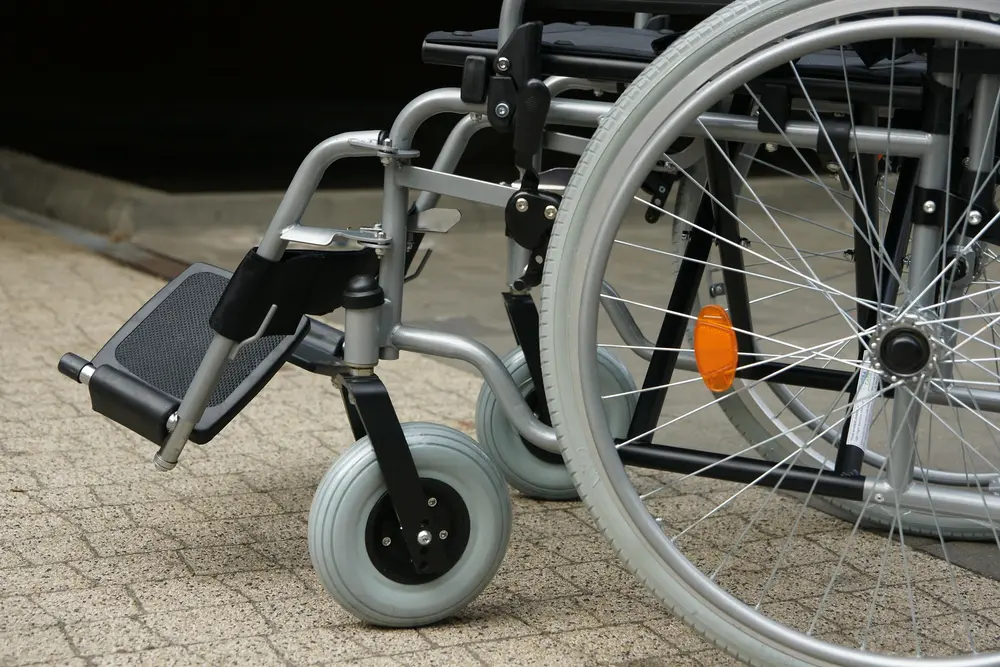Maybe you or someone you love recently suffered a serious permanent injury. Or perhaps you have been diagnosed with a medical condition or disease. If you are struggling with a long-term condition that is preventing you from making a living, you may have heard about Social Security disability benefits. Surprisingly, though, many folks don’t know about these benefits. You may have been asking yourself: “How do I apply for Social Security Disability?”
In some ways, this is a fairly basic and easy-to-answer question. Head over to SSA.gov, and you will quickly find options to apply online or call. SSA even has two separate phone lines:
- 800-772-1213 (toll-free), and
- 800-325-0778 (TTY)
You also can visit your local Social Security office and tell them that you want to apply for benefits. Here is a link to help you find your nearest Social Security office: https://www.ssa.gov/locator/
However, if you want the highest chance of your disability claim being approved, the best option is to work with an experienced disability attorney.
This doesn’t mean you shouldn’t be educated on the process yourself. Below, we are going to dive into the nuts and bolts of how to apply for Social Security disability if you believe you qualify.
How Do I Apply for Social Security Disability? Make Sure Your Application Is a “Claim for Benefits”
When you apply for Social Security disability, you are making a “claim for benefits.” The Code of Federal Regulations lists four things that make an application a valid claim for benefits. You have to:
- Use a prescribed form to file
- Complete and file the application according to §§ 404.611 and 404.614
- Sign the application, or have someone described in § 404.612 do so
- Be alive when you file (exceptions to this are covered under § 404.615)
Let’s break these four things down in more detail.
Using a Prescribed Form
What exactly do they mean by a “prescribed form”?
“Prescribed applications include our traditional pre-printed forms, and applications our employees complete on computer screens based on information you give us. We then print a copy on paper, have you sign it and process the signed application electronically. You may also use SSA’s Internet website to submit an SSA-approved application to us. You can complete an Internet application on a computer (or other suitable device, such as an electronic kiosk) and electronically transmit the form to us using an SSA-approved electronic signature. If, however, we do not have an approved electronic signature established when you file your Internet application, you must print and sign the completed application and deliver the form to us.”
Essentially, they’re saying you have to use one of their official forms to apply. Fairly straightforward as long as you’re going through official channels, but take care – there are a number of third party sites out there offering to help you apply. There’s no guarantee that any form you complete through one of these sites will be a “prescribed form.”
Knowing When an Application Is Considered “Filed”
Generally speaking, the SSA considers an application for benefits to be filed “on the day it is received by an SSA employee at one of our offices or by an SSA employee who is authorized to receive it at a place other than one of our offices.”
Exceptions include using the date when an application:
“is received by any office of the U.S. Foreign Service or by the Veterans Administration Regional Office in the Philippines;
…is mailed to us by the U.S. mail, if using the date we receive it would result in the loss or lessening of rights. The date shown by a U.S. postmark will be used as the date of mailing. If the postmark is unreadable, or there is no postmark, we will consider other evidence of when you mailed it to us; or
…is filed with the Railroad Retirement Board or the Veterans Administration. See § 404.611 (b) and (c) for an explanation of when an application for benefits filed with the Railroad Retirement Board or the Veterans Administration is considered an application for social security benefits.”
Understanding How to Sign the Application
This may seem like a fairly easy question to answer in terms of “How do I apply for Social Security Disability?” After all, most people understand that official documents must be signed, and doing so seems fairly straightforward.
However, there are circumstances in which this is not so cut-and-dried. In fact, the SSA considers the question of who may sign someone’s application so complicated that they have broken it down into seven parts!
So, who can sign? And in what circumstances?
“(a) A claimant who is 18 years old or over, mentally competent, and physically able to do so, must sign his or her own application. If the claim is for child’s benefits for a person who is not yet 22 years old, the application may be signed by a parent or a person standing in place of the parent.
(b) A claimant who is between 16 and 18 years old may sign his or her own application if he or she is mentally competent, has no court appointed representative, and is not in the care of any person.
(c) If the claimant is under age 18, or mentally incompetent, or physically unable to sign, the application may be signed by a court appointed representative or a person who is responsible for the care of the claimant, including a relative. If the claimant is in the care of an institution, the manager or principal officer of the institution may sign the application.
(d) If a person who could receive disability benefits or who could have a period of disability established dies before filing, an application for disability benefits or for a period of disability may be signed by a person who would be qualified to receive any benefits due the deceased.
(e) If a written statement showing an intent to claim benefits is filed with us, but the person for whom the benefits are claimed dies before an application is filed, an application may be filed as explained in § 404.630(d).
(f) If a person who could receive benefits on the basis of a “deemed” filing date of an application under § 404.633 (b)(1)(i) or (b)(2)(i) dies before an application for the benefits is filed, the application may be signed by a person who would be qualified to receive any benefits due the deceased person as explained in § 404.633 (b)(1)(ii) and (b)(2)(ii).
(g) If it is necessary to protect a claimant from losing benefits and there is good cause for the claimant not signing the application, we may accept an application signed by some one other than a person described in this section.”
Surprisingly complex, no? This is why working with a knowledgeable Social Security disability lawyer can be so valuable. Seemingly “small” mistakes such as allowing the wrong person to sign can lead to delays or even outright denials.
Being Alive… Most of the Time
Okay, obviously if you are applying for disability benefits for yourself, this doesn’t really apply to you. However, quite a few people out there asking “How do I apply for Social Security Disability benefits?” have questions, because they are trying to apply for someone else. This is where the exceptions to being alive come into play.
These are:
“(a) If a disabled person dies before filing an application for disability benefits or a period of disability, a person who would be qualified to receive any benefits due the deceased may file an application. The application must be filed within 3 months after the month in which the disabled person died.
(b) If a written statement showing an intent to claim benefits is filed with us, but the person for whom the benefits are claimed dies before an application is filed, an application may be filed as explained in § 404.630(d).
(c) If a person who could receive benefits on the basis of a “deemed” filing date of an application under § 404.633 (b)(1)(i) or (b)(2)(i) dies before an application for the benefits is filed, the application may be signed by a person who would be qualified to receive any benefits due the deceased person as explained in § 404.633 (b)(1)(ii) and (b)(2)(ii).”
Keep in mind that anyone signing an application for another must provide evidence of their authority to do so. This is also governed by specific rules.
Providing Evidence of Disability
This may very well be the key area where people make missteps when applying for disability benefits. Simply put, in order to receive benefits, all adults must be able to prove to the SSA using documented evidence that they are, in fact, disabled.
Most commonly, the type of evidence that the SSA is looking for will include things such as work history/records and medical history/records. These records will be used in their 5-Step Sequential Evaluation Process – essentially a test designed to prove (or disprove) that you have been unable to perform substantial gainful activity for a year or longer.
The SSA does provide applicants with information on the type of evidence they require – and how to get that information. However, what they are not as clear on is: They are looking for documentation that conveys the information in a very particular way.
Again, this is where a skilled disability lawyer can be a huge asset, because they understand how to work with medical and other professionals to obtain accurate information. They know when you must use original copies of documents, and when you are allowed to turn in certified – or even uncertified – copies. And, in general, they just know the SSA preferences and what kinds of information are most likely to get your claim approved.
Want to know more about applying for Social Security Disability benefits and how working with a lawyer can help?
At Feingold Law, we have worked with countless people just like you to assist them in getting the benefits they need and deserve – and we don’t receive any payment unless your claim is approved. Reach out today to learn what we do and how we can help.







